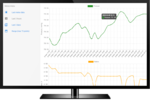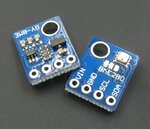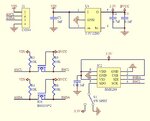alexanderkif
Newbie level 4

Hi.
You can use your sensors, but again I made a weather station .
.

The board starts, sends data to backend (Node.js) and falls asleep for 5 minutes. To save battery power, the field effect transistor at pin D6 turns off the power to the BME280. The 18650 battery is controlled by input A0. If the battery voltage exceeds 4.2V, the D7 output breaks the battery charge circuit from the solar panel.



Out of the door:





You can use your sensors, but again I made a weather station
The board starts, sends data to backend (Node.js) and falls asleep for 5 minutes. To save battery power, the field effect transistor at pin D6 turns off the power to the BME280. The 18650 battery is controlled by input A0. If the battery voltage exceeds 4.2V, the D7 output breaks the battery charge circuit from the solar panel.



Out of the door:









